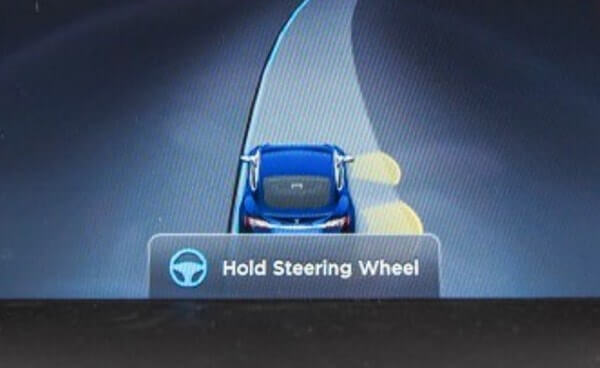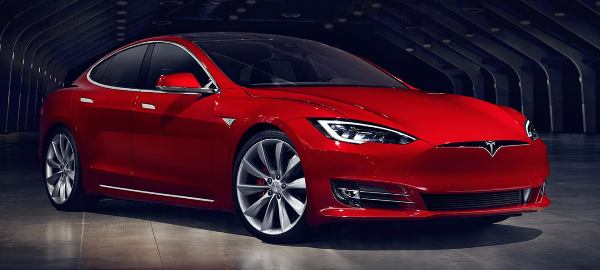Are Self Driving Cars Doomed?
By now I'm sure you've heard about the fatal crash that occurred while a driver was riding in a Tesla that was using the Autopilot. The car crashed at very high speed into the trailer of an 18 wheeler that was making a left turn in front of the Tesla. Reports say that the driver was watching a movie at the time. The publicity surrounding this crash seemed to die down very quickly.
Who is at fault?
Tesla states that when using their Autopilot that the driver should keep their hands on the wheel while the Autopilot is active and be ready to take over the driving at any time. Clearly, the driver in this case wasn't ready to take over if they were watching a movie.

However, the way that Tesla likes to show off their technology, it certainly makes you think that you can drive hands free with no problem. Their sales people like to impress potential buyers by having them take their hands off the wheel while on test drives.
In this case, I would say that both parties have some responsibility for the accident. Clearly, the Autopilot failed to detect the truck turning across the road. You would never expect a driver assist system to take your vehicle right into an obstacle. If the driver was watching a movie, he clearly wasn't ready to take over at any time so some of the blame has to fall on him.
Planes and Rockets Fly Themselves
Highly advanced autopilots have been available for airplanes since the late 1940's. Any time you fly, the plane you are on is capable of landing itself as long as the airport is equipped with the proper guidance systems. Rockets have always been automated for launch and re-entry with technology dating to the 1950's.
If these complex flying machines have been able to fly themselves for decades, why has it taken so long for self driving cars to appear?
Cars Have to Deal with Unexpected Obstacles
When a plane is flying on autopilot, Air Traffic Control is keeping it spaced far away from any other aircraft. When a rocket is launching or coming back to earth, many miles of the sky are reserved and all other aircraft are kept out of that area. While you are on your way out to Las Vegas, a plane on its way to Canada isn't going to suddenly turn in front of you.
When you are driving, the behavior of other drivers and pedestrians is unpredictable. Some idiot texting while driving 80 MPH might suddenly drift into your lane on the highway. When you are driving in the city, somebody might decide to run across the street in front of you.
For automatic driving modes to work, the car must be able to quickly detect these sudden obstacles and quickly react to avoid them.
Having a system that maintains your position with in a lane is very complex. It doesn't matter if an airplane or a rocket drifts a couple of feet off course. It matters very much if a car does the same thing because you will end up in the adjacent lane or even worse.

Courtesy of Tesla
GPS is not accurate enough to figure out exactly where you are on a road. With very high quality receivers, the FAA has reported accuracy of 11.5 feet. If you move 11.5 feet to one side while driving will definitely not still be in the same lane that you started in.
A vehicle requires cameras and advanced image processing to keep itself in a lane. It must "see" the lane markings just like you do with your eyes. Even more cameras and possibly other sensors are needed to see other cars and pedestrians. Sometimes the lane lines are worn out or missing. Road construction might cause lanes to disappear and require merging.
Slow Evolution
Cruise control began to appear on some vehicles in the 1950s. These systems maintain speed but require the driver to handle steering and any necessary breaking. In the 1990s, adaptive cruise control began to appear and would vary the speed to maintain a constant gap between your car and the car in front of you.
More recently, manufacturers have started to offer active collision avoidance systems. These systems use sensors to detect an impending accident and take evasive action faster than a human can react. All of these systems advise the driver to pay attention and not rely on the system.
True self driving cars have been very slow to develop. Even the Tesla Autopilot won't navigate you through a route. It will maintain speed and keep you in your lane as well as change lanes when you tell it to.
Google has very publicly been working on a truly self driving car for several years. Their car is capable of navigating a route on its own. Many of the major manufacturers have also been working on autonomous driving technology.
What Could Put the Breaks on Autonomous Vehicles
The biggest threat to self driving cars and trucks is lawyers. Any time a self driving car is involved in an accident, the manufacturer is almost guaranteed to be named in a law suit. Think about it, if you are involved in a crash, your insurance will pay out maybe $250,000 - $500,000 if you are sued.
Compare that payout to what a plaintiff can win from a huge corporation that is worth billions. If you pay attention, every time there is an airplane crash, the manufacturer of the plane gets named in the lawsuit even if the plane itself had nothing to do with the cause of the crash.
If lawsuit after lawsuit is filed against car makers when autonomously operating vehicles are involved in accidents, eventually the manufacturers will stop making them to avoid the liability. Even if the self driving cars are 100 times safer than cars driven by human drivers, lawyers have the ability to crush the technology.

About The Author: Lyle Romer is a consumer advocate, Founding Contributor and Vice President of CarBuyingTips.com. A 20 years veteran of the auto industry with a high level of expertise, Lyle has been researching all aspects of the automotive sales industry.
Lyle's expertise and research played a vital role during the creation of CarBuyingTips.com in 1999 after years of industry research. He carefully observed every aspect of his own car buying experience as the internet began to take a foothold in the process. He also designed the site to make sure that consumers had easy access to the best consumer advocate education.
Lyle has been an auto industry insider since 1999. He also has worked with other automotive websites to help improve their offerings based upon feedback from CarBuyingTips.com users. He covers important industry events and gathers off the record sources while attending industry conventions.
Connect with the author via: Email







